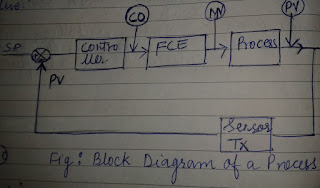A common implementation of Cascade Control is where a flow controller receives setpoint from some other process controller (pressure,temperature,level,analytical etc) ,fluid flow being one of the fastest responding process types is existence.
A feed water control system for a steam boiler is one such example.
The secondary or slave controller(flow) works to maintain feed water flow to the boiler at whatever flow rate is desired by level controller. If feed water pressure happens to increase or decrease any changes in flow will be quickly countered by flow controller without level controller having to react. Thus cascade control works to guard against steam drum level instability resulting from changes in feed water flow caused by factors outside the boiler.
Here the slave(flow) controller effectively shields the master(level) controller from loads in feed water supply system,so that master controller doesn't have to deal with those loads. One of the benefits is that this problem becomes confined to secondary loop (flow control) and is effectively removed from primary control loop.






